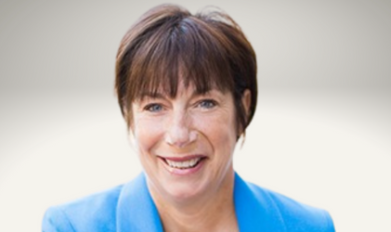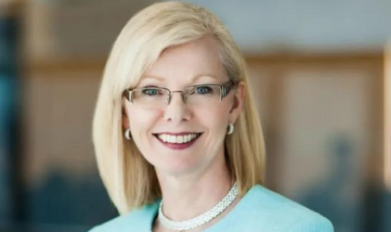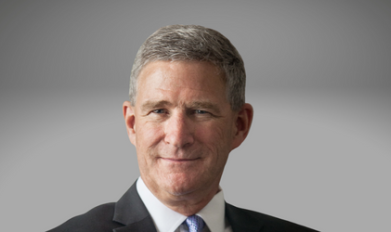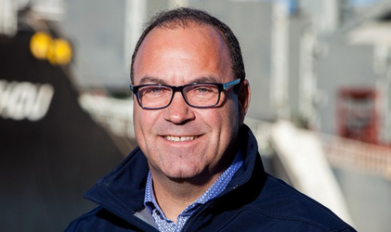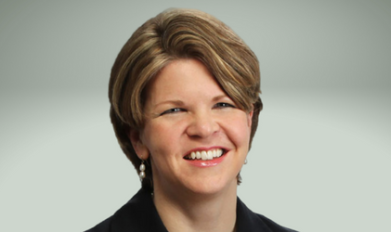A KBRS partner interviews Cynthia Dorrington, who became chair of the Halifax Chamber of Commerce Board of Directors in 2018, to gain insights on how high-impact Atlantic Canadian organizations are optimizing the potential of people to contribute to the region’s growth and prosperity, and to discuss how strengthening our workforce can enhance our economic outlook.
As the Board Chair, Dorrington is pursuing a vision for greater diversity in both the Chamber’s membership and in its board members. Drawing on her extensive experience as both president of Vale & Associates Human Resource Management and Consulting Inc. and the Chair of the Black Business Initiative’s Board of Directors, Dorrington sees opportunities for dynamic change in Atlantic Canada’s demographics and economic growth. She shares her thoughts on how diversity leads to more innovation, how leaders can welcome more newcomers to our region, and how to ensure that more business voices are represented and heard.
Q: What do you believe are the key strengths of the Chamber and how has it evolved over the course of your involvement from member to board chair?
A: I think the Chamber has always been particularly strong in terms of connecting people, building capacity, shaping policy, and generally being an advocate for our members. Through the training we provide, and the presentations we make to municipal and provincial governments on issues such as taxation and budgets, we’re helping to ensure that businesses here not only survive but thrive.
One change I have noted since becoming a member in 2013 is an increasing focus on diversity at the board level. I don’t mean just the size of businesses represented. We want to ensure that Chamber members see themselves represented from a cultural and gender perspective. More than that, we want to ensure that different member views are heard and appreciated, even when they are not in alignment with the majority. The more diverse our board is, the easier it is to facilitate this. There is still room to grow, but it is happening.
Q: Do you see your own appointment as a step toward that goal?
A: I do. It’s an honour to be the fourth woman and the first African-Nova Scotian to serve as chair in the organization’s 268-year history. It’s particularly significant when you consider that African Nova Scotians have been contributing to the business community since we started settling here in the early 1700s. Historically, we have not been recognized for our contributions to the region’s economy, and for many years we were not allowed to be Chamber members. You can still see the effects of that in our membership today, which I don’t think reflects the number of African Nova Scotian businesses that are currently operating. You could say the same about other communities for that matter, such as Lebanese Nova Scotia businesses. That’s because we haven’t built inroads with those communities or engaged them in conversations about the value of Chamber membership.
Number-wise, we have a pretty strong chamber, with more than 1,600 members. We always want to grow, but I believe our growth efforts should reflect the demographics of our business community. If not, then we are not doing our job to be a voice for everyone. We are just a voice for the majority.
Q: So how do you achieve that growth? What do you see as vital in terms of opening the Chamber to diverse voices and cultures?
A: It comes down to building trust. Take the African-Nova Scotia community or the First Nations community. Both have been here for a very long time and both have been marginalized. When we reach out to these communities to build relationships, we need to acknowledge as a Chamber that the things we did in the past were wrong. We cannot change that history, but what we can do is draw on it to make a better future.
We can’t build inroads and trust by reaching out to these communities and telling them what we are going to do for them. After all, what we think we should do may not be the right fit and we’re not establishing the necessary trust by presuming we know what to do. Instead we need to engage these communities and listen to their needs, understand them, and respond in kind. That is the key, otherwise there will be no trust.
That mindset reflects the fact that many people still face racial discrimination here, even from a business perspective. There are unconscious biases that we need to address as Atlantic Canadians. I’ve met with business people here who have said to me ‘I was not expecting you to be black’ or ‘You don’t sound black.’ Automatically, that creates an us-and-them mentality, because you realize that someone has already put you in a category. I try to overcome that kind of bias where I can, but I know I’m not going to change everyone’s opinion, so I’m not going to spend time educating people who do not want to be educated. And sometimes, they don’t.
Q: The theme of the Chamber’s 2018 fall dinner was innovation. How is innovation tied to diversity?
A: When you look at great advances in history, like the invention of the washer and dryer or the first open-heart surgery, some of those were made by people of colour, but that was never acknowledged. You can see that kind of bias in the way that people talk about Egypt as the cradle of civilization while dismissing the rest of Africa. It’s almost as if they are denying that Egypt is part of that continent.
Real innovation happens when you enable everyone to think outside the box regardless of their ethnicity or gender. Leaders need to be aware that everybody thinks differently, has different experiences, and different ways of learning. That’s where original ideas come from. If we are open to the idea that innovation can come from anyone and anywhere, it will lead to a better society.
Q: What can we do as a region or business leaders to be more accommodating for newcomers?
A: We have to remember that people not only have different cultural beliefs or perspectives but also different ways of working. I’ll give you an example. I had an opportunity to work in Ghana and Eritrea. I went over there with a fairly North American mindset about how you greet people, and about the interactions of women and men in the workforce. But once you are there, you realize that people have their own way of welcoming you, of working, and of the roles that men and women play both in society and in the workplace, and you have to appreciate that.
The same thing applies here. We need to remember, as Atlantic Canadians or business leaders, that the way we do things is not the only way, and the people who are coming here have their own norms. We cannot just expect to overlay ours. We need to learn, appreciate, and accommodate their norms to the best of our abilities. That may take you out of your comfort zone, but we need to understand others and be open to change if we want to attract and retain talent.
Ultimately, the question we need to ask ourselves is how well are we embracing these communities? We can say that immigration is important in addressing our demographic challenges, employment shortages and maintaining our economic vitality, but if we do not embrace the people who come here, they will not stay. Part of that is attitudinal. I’ll give you an example. My mother moved to my father’s hometown 65 years ago and she is still regarded in the community as a come-from-away. That’s something we need to address.
We also need to reconsider what being welcoming means. Look at a city like Toronto. When people migrate there, they are integrating into communities that speak their languages, that share their customs, or share the same religion. The city is capitalizing on that by building subdivisions around religious structures, such as churches, mosques, etc. If we do not do the same for our newcomers, we will lose them.
Q: What role do you see the Chamber playing in accommodating diverse communities?
A: We need to determine how people in these communities run their businesses, what they want from us, and how we can best support them. In some ways, I see the Chamber like a restaurant. We have a set menu that we offer our clients, but what we need to do is engage more communities and say, ‘Here are the ingredients we have. How can we combine them to serve your needs?’ That’s not something we have done at the Chamber, but it is a priority for me over the coming year because the more we can adapt, the better we can accommodate everyone.
Regardless, we need to put more emphasis on diversity, equality, and inclusion. There is considerable conversation around that topic now, and for good reason. We must embrace it more because we have a changing demographic. That means looking ahead to think about what businesses will look like as our community continues to diversify. Who will run them? What will their needs be? Once we do that, we can start to shape policy that reflects the diversity of our business community.
Q: What does the future hold for Atlantic Canada’s workforce? What trends do you see emerging over the next five to 10 years?
A: We have a new generation coming into the workforce and that will result in changes in how people work and interact. For one, the technology we use is going to change because what young people use and how they use it is different from what we have on our desks today. There will be changes in soft skills that will impact team dynamics and communication. Young people have very different approaches to connecting and communicating than employees in their 50s, so we need to develop a more respectful, welcoming, and open environment that takes all preferences and approaches into account if we want to encourage sharing and blending among team members.
I also foresee an evolution in how we look at work-life balance as workplaces continue to diversify. Typically, leaders of organizations articulate the vision and look for buy-in without considering it means different things to people from different backgrounds. For some cultures, there is no question of balance because it is all about work to them. If you are diversifying your workforce, the best approach is to work out the concepts with your team instead of implementing something from the top down.
Even the concept of core hours of work is going to change. We’ve always accepted that employees are going to be onsite 9:00 a.m. until 5:00 p.m. for five days each week, but it was always based to an extent on the deliverables they achieved. If someone’s work hours are from 5:00 p.m. until midnight, and they are meeting their deliverables, and those deliverables are not time-sensitive, is that a bad thing? I would say no, but the question is how willing are organizations to change?
At the same time, leaders need to recognize that these changes come with a price. There is the potential that you could lose some core people who are not comfortable with these changes. Or you could wind up cutting training budgets to invest in new technology. Ultimately, whatever changes we make, businesses need to consider the pros and cons and develop their growth strategies accordingly.
About Atlantic Leader Insights
Atlantic Canada’s economy is fueled by a diverse array of private and public sector entities that employ thousands of people and contribute to our region’s growth and prosperity. But how are these organizations optimizing the potential of their people, and what insights have they gained about the future of our economy from their innovative initiatives?
KBRS recognizes the critical importance of attracting, developing and retaining inspiring leaders and top talent within Atlantic Canada. We sat down with leaders at several high-impact Atlantic Canadian organizations to talk about our region’s opportunities and challenges. This article is one in a series that aims to collect these leaders’ insights on how we can enhance our economic outlook by strengthening our workforce.
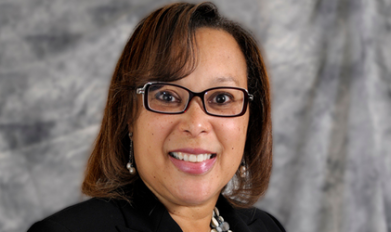
Board Chair, Halifax Chamber of Commerce, 2018



